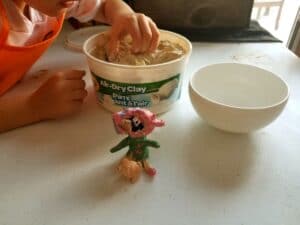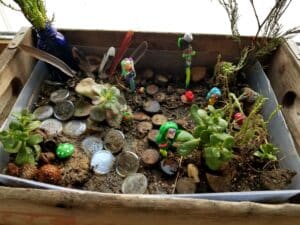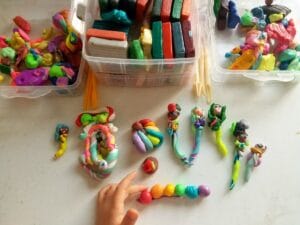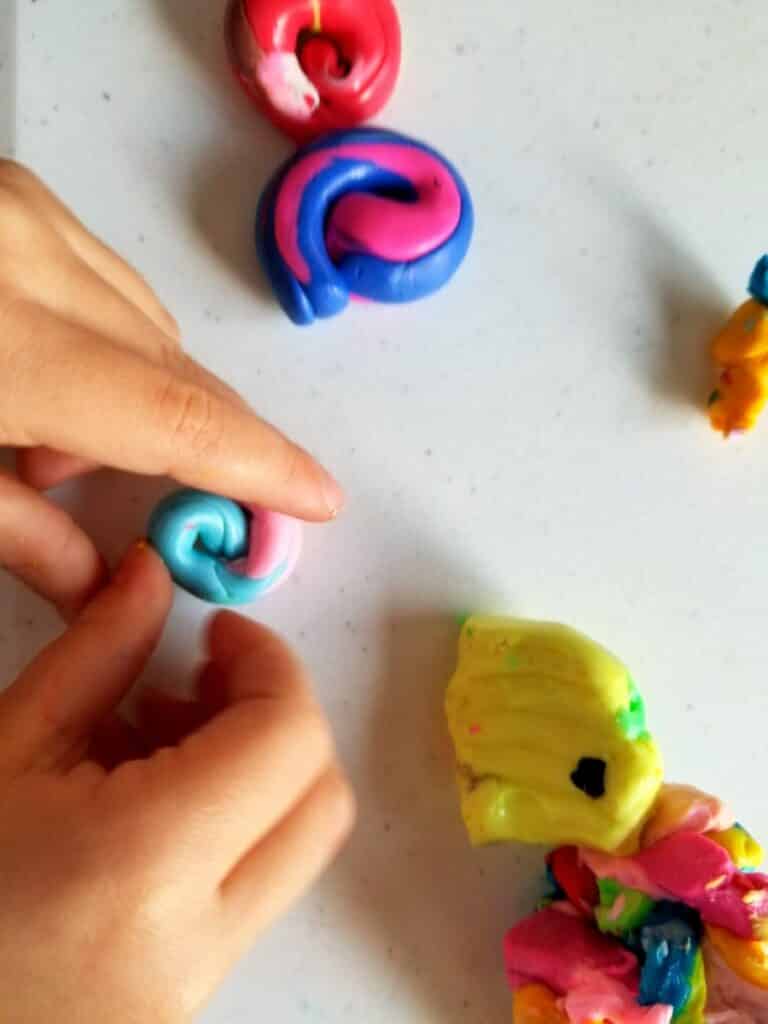Art Class: Clay
Page Contents
Art projects for any age to add some colorful fun into your homeschooling day.
Importance of Art
Why should you incorporate art into your homeschool day? Well besides it just being an enjoyable activity, art promotes creative thinking and fosters self confidence. It helps with fine motor skills in youngsters and can help keep youngsters focused and engaged when used in your various homeschool studies.
Art and Creative Thinking / Problem Solving
Using art materials and textiles promote experimenting and thinking outside of the box to make various pieces come together. We come up with the ideas in our mind and need to think creatively on how to execute our plans. This can be incorporated into life with creative solutions to problems we encounter.
Fine Motor Skills
Gripping a crayon, painting with a brush, manipulating clay, and gluing pieces together all require fine motor skills. It’s easy to get a child to willingly focus on improving their fine motor skills with art. Doodling can also contribute to skills needed for writing.
Self Confidence
It is so gratifying to see your piece come to fruition – to see something that was once in your mind now in physical form. Art is also good for emotional expression.
Now that we are all on the same page that art is not only fun but also beneficial I’ll move on to our art topic of the day: clay!
Air Dry Modeling Clay
Air dry modeling clay is a pretty easy fun medium where you mold your pieces and allow them to air dry to harden. You can use your own paints to add color where you want it.

Instructions for Air Dry Modeling Clay
We have used Crayola Air-Dry Clay and have had pretty good results. It is a natural earth clay which can get a little messy on little hands but washes off easily with soapy water. It is very simple to use, just sculpt and let air dry for about 3 days (this is going to vary depending on the size of your piece).
You can use any tools you like to make different textures, and water helps to smooth everything out or to help make the clay more pliable if it got a little dried out. Someday I want to dig out some of the clay I found in our yard when I was gardening this past summer and make something out of it – alas our ground is frozen right now, so this will have to wait till the summer.
Polymer Clay
Polymer clay is not a natural clay , it is made from plastic (PVC). It will keep its shape without shrinking and comes in a variety of effects to give the effect of glass, porcelain, and stone. Polymer clay also come in a variety of premade color or you can mix them to your liking. You may also paint them, or add coloring such as some old eyeshadow you don’t use any more – it’s fun to experiment! I like that they are water proof so we often make pieces to use in our fairy garden.

Instructions for Polymer Clay

1.) Gather up your clay and any supplies you may want to use. (Note: If using kitchen utensils keep these utensils separate for clay use now – While polymer clay is nontoxic it is still plastic so you don’t want to eat it.)
2.) Get creative and mold your creations! Have fun trying out different techniques.
3.) Line a baking pan with aluminum foil and place your creations in the oven to bake. Follow manufactures instructions for temperature and length of time. (I like to use our toaster oven out in the garage because I feel like it gives off a slight smell and I have a picky nose with chemical smells. I’ve also read you can bake them in Reynolds bags to seal the smell in.)
4.) Wash your hands thoroughly after using polymer clay.
5.) Remove from oven and allow pieces to cool down before handling.
Fimo, and Sculpey are popular brands for polymer clay. We have bought Farielyn-X off of Amazon a few times and have had good results with more of a budget price tag. Many of the kits come with little plastic tools to use for texturing, cutting, and shaping, as well as pieces to make jewelry. There are so many techniques out there if you want to try to create different effects with your pieces, or you can just keep it simple. These make great gifts for friends and loved ones.
The Science of Clay
Want to also throw a little science into your art projects? Polymer clay is made from PVC (polyvinyl chloride) and a plasticizer. The plasticizer helps to make the PVC more flexible. Polymer Clay is made through a chemical reaction. We touched on chemical reactions in our d.i.y. playdough experiment and touched on it some more while using our polymer clay today. Can you find any PVC around your house? Hint: You may be able to find some used in the pipes under your sinks. I found Dina’s post about polymer clay to be very informative if you really want to deeply delve into the science.
We love doing all kinds of artsy and craftsy things in our home. Sure it gets covered in glitter and paper scraps sometimes but it’s lots of fun and it is beneficial to all. Have fun creating!
*This page contains affiliate links. All opinions are completely my own but if you follow one of my handy links I earn a small commission at no extra cost to you. As a participant in the Amazon Services LLC Associates Program I may earn a commission through their affiliate advertising program designed to provide a means for sites to earn advertising fees by advertising and linking to Amazon.com Thanks for your support!
Additional Art Projects:
DIY Playdough and The Science Behind It
Want to Stay in the Loop?
Sign up for the Sunshine and Clover 123 newsletter for a 30% off coupon code, and stay updated on the latest products and happenings! Have fun learning!
